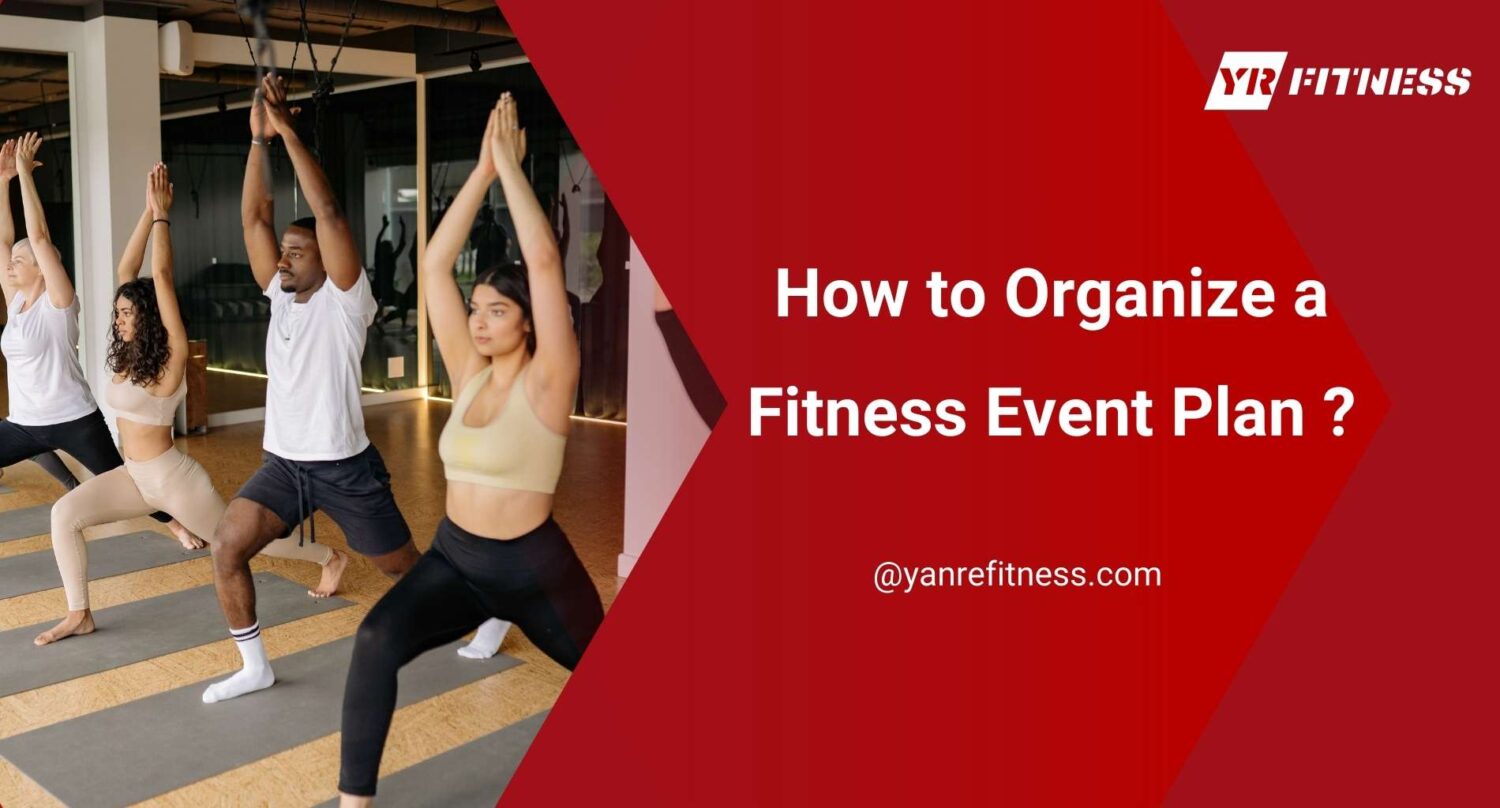I put a lot of hope into my first fitness event. I thought a few posters, some snacks, and a guest speaker would be enough.
It wasn’t.
People showed up, but they didn’t stay. They didn’t ask questions. And no one signed up afterward.
That’s when I realized planning an event isn’t just about filling a room. It’s about creating a reason for people to care—and a plan to keep them engaged.
Since then, I’ve learned how to plan fitness events that bring energy, create buzz, and actually support business goals.
In this article, you’ll get a step-by-step plan. You’ll learn how to pick a purpose, build momentum, manage the day, and keep the results going long after the event ends.
So let’s start!
- Step 1: Define the Goal of Your Fitness Event
- Step 2: Identify Your Target Audience
- Step 3: Plan the Event Format and Type
- Step 4: Set a Realistic Budget
- Step 5: Choose the Right Venue and Date
- Step 6: Build an Engaging Event Schedule
- Step 7: Promote the Event Effectively
- Step 8: Prepare the Logistics and Staff
- Step 9: Execute the Event Professionally
- Step 10: Capture and Post-Event Use
- Step 11: Follow Up and Evaluate Results
- Conclusion
Step 1: Define the Goal of Your Fitness Event
Every successful fitness event starts with a clear goal. It’s easy to get excited about planning, but without a goal, it’s hard to know if the event actually worked.
When I planned my first fitness event, I skipped this step. I focused on getting people through the doors. That part worked—lots of people showed up. But after it ended, nothing really changed. No new memberships. No extra buzz. No clear takeaway.
That’s when I realized the event didn’t have direction. It had energy, but no purpose. I learned the hard way: if you want your event to make an impact, you have to begin with a goal you can measure.
Choose a Clear, Measurable Objective
Think about what your event is really for. What’s the one outcome you want most?
Here are some common goals to consider:
- Launch new equipment: Let people test your latest cardio or strength machines, such as featured tricep machines or leg press setups that draw attention and conversation
- Get more members: Offer event-only deals to drive sign-ups
- Build local awareness: Let your community know who you are and what you offer
- Teach something helpful: Run a session that gives real value, like injury prevention or proper machine use
Pick the one that fits your current needs. Then, write it down.
Keep It Focused
You should have:
- One primary goal: This is the main reason you’re holding the event
- One or two supporting goals: Smaller targets that help support the main one
Example:
- Primary goal: Get 25 new member sign-ups within one week
- Supporting goal 1: Collect at least 100 email contacts
- Supporting goal 2: Feature two new product demos
Writing it out like this keeps your event focused and easier to plan.
Why This Matters
When you know your goal, planning becomes easier. You’ll know what kind of event to run, who to invite, what to say, and what to track afterward.
Without a clear goal, it’s hard to measure success. You could put in weeks of effort and still feel unsure about the results.
So start with this. Keep it simple. Keep it focused. Everything else will be built from here.
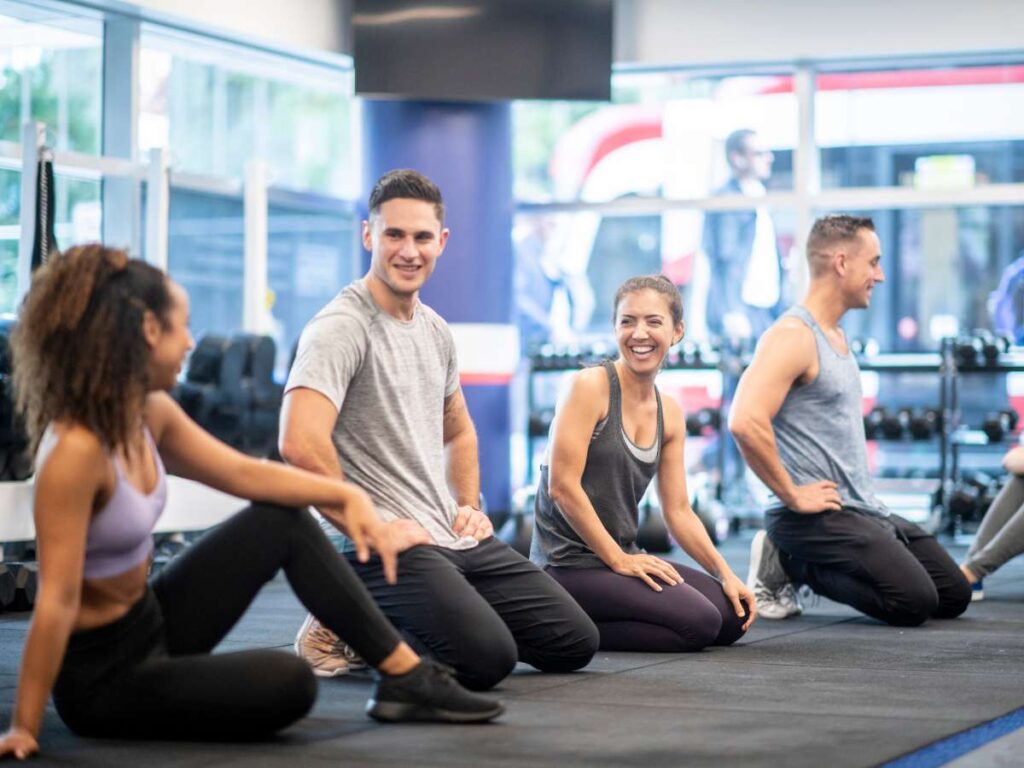
Step 2: Identify Your Target Audience
Now that you’ve defined your goal, it’s time to ask another important question: Who is this event really for?
You might think, “Everyone’s welcome.” And sure, anyone can come—but if you try to speak to everyone, you’ll connect with no one. That’s something I learned the hard way.
At one of my early events, I tried to mix everything: group workouts, equipment demos, business talks. I thought it would impress more people.
But instead, it confused them. People didn’t know what to focus on. The event felt scattered.
Once I started choosing a clear audience, my events felt smoother—and got better results.
Know Who You’re Planning For
Every event is shaped by the people it’s meant to serve.
If you know who you’re targeting, you can plan content they care about, at a pace and style that makes sense for them.
Here are a few examples of common audience types:
- Gym members: These are your regular or loyal users. Offer them new class previews, loyalty rewards, or fun competitions.
- Local fitness enthusiasts: Think of people who follow fitness trends but may not know your brand yet. They might enjoy guest workouts, health checks, or social activities.
- Trainers and coaches: This group wants deeper insights. Consider expert talks, product demos, or networking sessions.
- B2B clients: These are other businesses—like gym owners, dealers, or rehab centers. Focus on showing results, product value, or building partnerships.
You can’t run the same event for all of them. What works for one group may not interest another.
Match Your Content to Your Crowd
Once you’ve picked your main audience, go back to your goal.
Now plan everything—from structure to schedule—with that group in mind.
Ask yourself:
- What kind of content would they find useful?
- What time of day works best for them?
- Should the event feel fun, educational, professional, or casual?
This isn’t about making the event perfect. It’s about making it relevant. When people feel like the event was built for them, they’ll show up—and they’ll stay engaged.
Knowing your audience is what turns a good event into what people talk about.
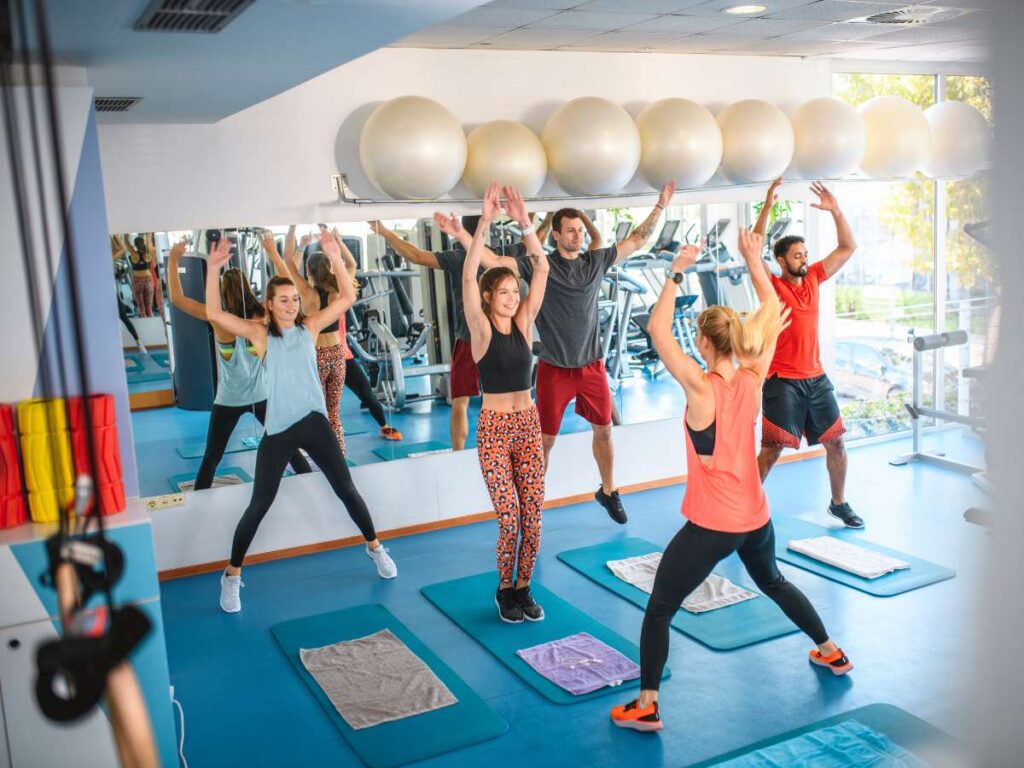
Step 3: Plan the Event Format and Type
Now that you’ve picked your goal and audience, it’s time to bring your event to life.
This is the part where everything starts to feel real. You get to decide what kind of event you want to host—and how you’ll run it.
I used to think all fitness events had to be big in-person productions. Loud music, lots of gear, tons of guests. But over time, I’ve seen smaller, focused events do just as well—sometimes better.
The key is choosing a format that matches your goal and speaks to the people you want to reach.
Pick the Right Type of Event
Start by picking a format that fits your audience and what you’re trying to achieve.
Here are a few popular options:
- Live fitness competitions or challenges: Great for engagement and energy. These attract people who love to move, compete, or just cheer others on.
- Equipment demo day or open house: A smart choice when you want guests to try machines, ask questions, and connect with your brand.
- Educational seminar or workshop: Perfect if your goal is to teach. Topics could include injury prevention, nutrition, or how to use specific machines safely.
- Partnered fitness class or influencer-hosted session: A good choice if you want to build hype. A guest trainer or fitness influencer can bring in new faces and create buzz online.
Don’t try to do all of these at once. Pick one or two that feel right for your goal and audience.
Decide on Virtual, In-Person, or Hybrid
Now choose how your event will run:
- In-person: This is best if your focus is hands-on. People can test equipment, meet trainers, and connect face-to-face. It also helps build trust and loyalty.
- Virtual: A smart choice if you’re on a budget or want to reach a wider audience. You can livestream demos, host online Q&As, or offer virtual training sessions. It’s less personal, but more scalable.
- Hybrid: Combines both. Some people join in person, others online. This works well for product launches or education-focused events. You get reach and connection in one format.
There’s no “right” way to do it. The best format is the one that fits your goals, budget, and audience.
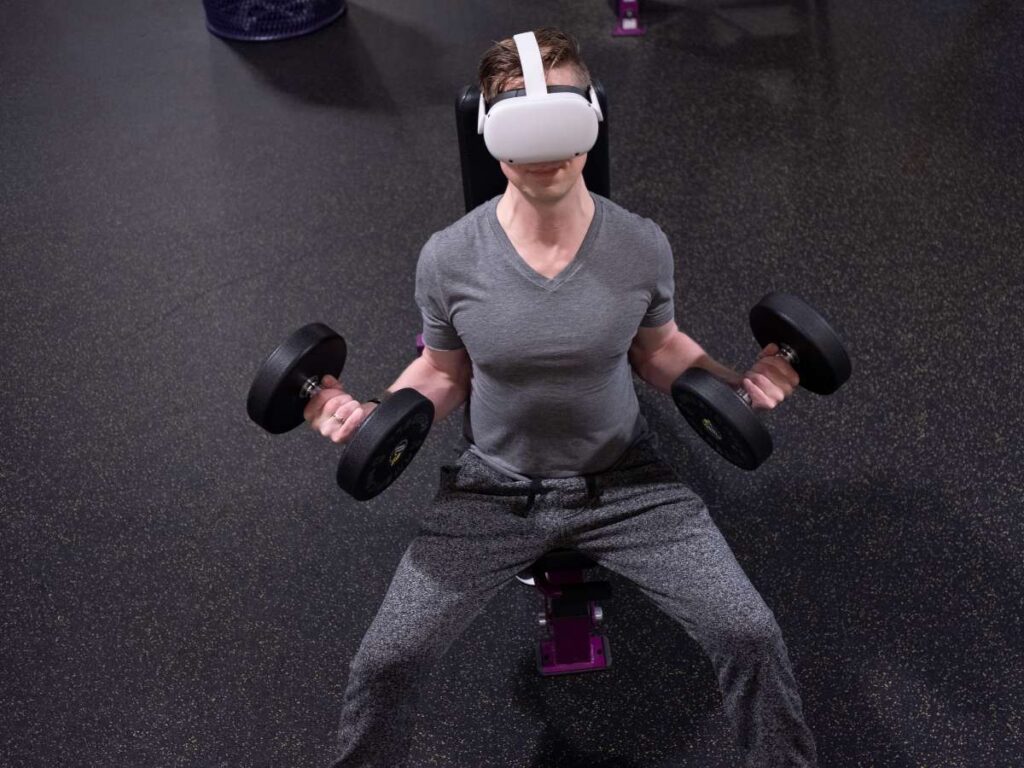
Step 4: Set a Realistic Budget
Planning a fitness event sounds exciting—until the bills start adding up. That’s why setting a realistic budget early on makes everything smoother.
I’ve been part of events where we didn’t track spending well. We started big, ran out of money halfway, and had to cut corners on things that actually mattered.
It’s not fun scrambling at the last minute.
So, before you book anything, take the time to figure out how much you can spend—and where that money should go.
What to Include in Your Budget
Even small events come with costs.
Here are the most common ones to plan for:
- Venue rental: If you’re not hosting at your own location, this might be your biggest cost.
- Equipment transport and setup: Moving heavy machines or setting up demo zones takes time—and sometimes helps.
- Staff and instructors: Will you need extra trainers or team members? Factor in their time.
- Marketing and promotion: Think flyers, posters, online ads, or even a simple social media boost.
- Branded swag or giveaways: T-shirts, water bottles, or small samples can help people remember you.
- Snacks and drinks: Even just a water station and some healthy bites can make a big difference in how people feel at your event.
Add everything up—even the small stuff. It all counts.
Look for Sponsorships or Brand Partnerships
If your budget feels tight, don’t panic. There’s a smart way to get support: team up with others.
You can ask for help from:
- Supplement brands: They often want exposure and may provide free samples.
- Local wellness providers: Chiropractors, physical therapists, or massage therapists might join in for promotion.
- Fitness apparel companies: Some are happy to donate gear or set up a pop-up booth.
Partnerships can cover costs, add value to your event, and bring in new faces. Just make sure your goals match—and keep the focus on what your audience will enjoy.
Budgeting may not be the fun part, but it helps your event run smoother and with less stress. You don’t need to spend a lot—you just need to spend smart.
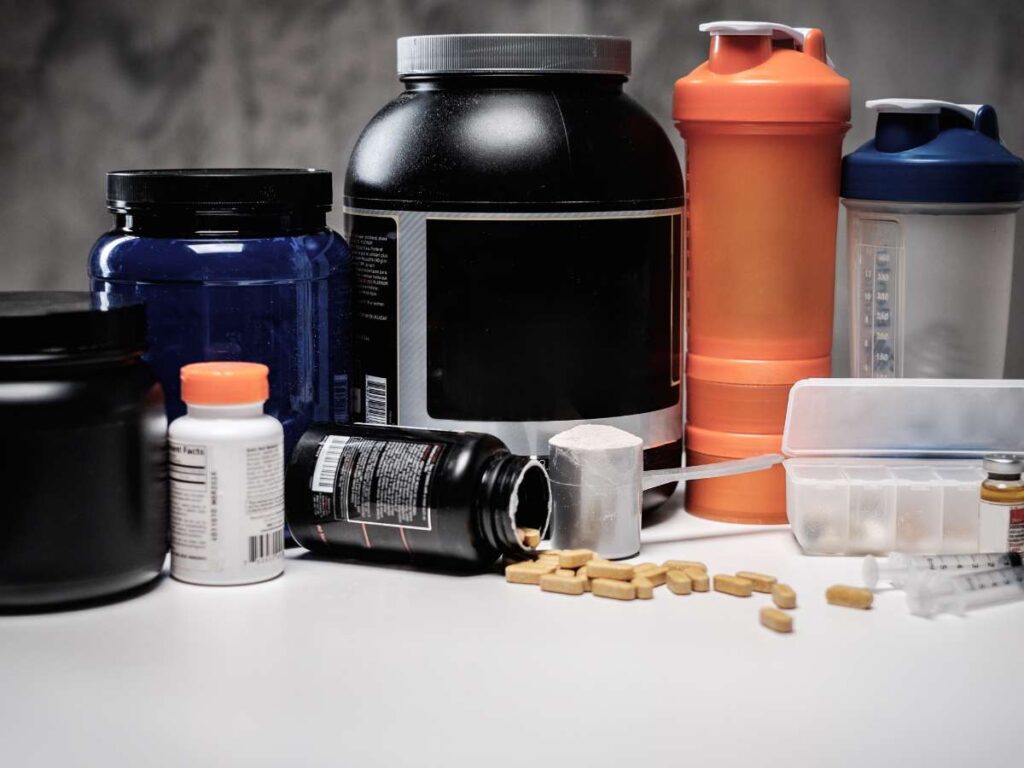
Step 5: Choose the Right Venue and Date
Picture this: music playing, people trying out new machines, trainers leading workouts, and everyone moving with energy.
That kind of vibe doesn’t just happen. You need the right space—and the right time—to make it work. A thoughtful gym layout design can also help maximize traffic flow, especially if your event includes demo stations or small group zones.
Choosing the venue and date might seem simple. But these two decisions can make or break the whole event. I once helped with a great event that barely had parking. Guests got frustrated before they even walked in.
Lesson learned: comfort matters.
Things to Consider When Choosing a Venue
Your venue sets the tone. It also affects how smoothly everything runs.
Here’s what to look for:
- Enough space: You’ll need room for movement. Whether it’s equipment demos, group classes, or just mingling, people shouldn’t feel cramped.
- Accessibility and parking: Make it easy for guests to get there—and park. If it’s too much of a hassle, people might skip it altogether.
- Power and safety: If you’re showcasing machines or playing music, check for enough electrical outlets. And always follow safety rules for setup and spacing.
Tip: Visit the venue during the same time of day your event will happen. That way, you can get a feel for lighting, traffic, and crowd flow.
Pick a Strategic Date
The date you choose matters just as much as the place. You want a time when people are free and ready to show up.
Here are a few tips:
- Avoid holidays and big local events: If your event overlaps with something major, you’ll lose attention.
- Choose a weekend, if possible: Saturdays or Sundays often work best for fitness events. More people are off work and open to attending.
- Give yourself time: Aim for at least 6 to 8 weeks ahead. That gives you room to plan, promote, and build interest.
I once rushed to an event with only 3 weeks to prepare. We barely got the word out. Turnout was low, and it felt like a missed chance.
Take your time choosing the right space and date. When people walk in and feel welcomed—when it’s easy to attend and fun to stay—that’s when your event really starts to shine.
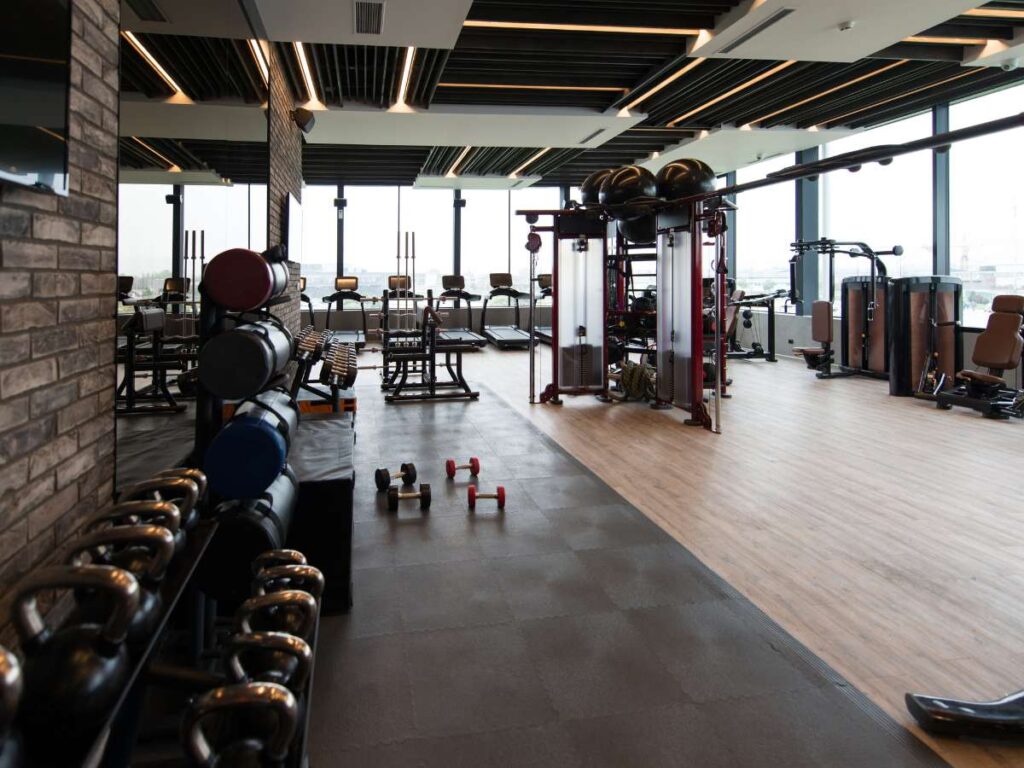
Step 6: Build an Engaging Event Schedule
Once you’ve picked the date and venue, it’s time to plan your schedule.
This is where your event takes shape—hour by hour. A good schedule keeps things running smoothly and keeps your guests interested.
I’ve been to events that had too much downtime. People got bored. Some even left early. But with a solid, engaging flow, you keep the energy up from start to finish.
Example Structure
Here’s a simple structure you can use to build your event timeline:
- Welcome and Registration: Greet guests, check them in, and hand out any materials or swag.
- Quick Brand or Product Intro: A short welcome message and a few words about why this event matters.
- Warm-up, Demo, or Group Class: Get the crowd moving. Show off equipment or lead a fun session.
- Networking or Trial Stations: Let guests explore, test products, or talk with your team.
- Giveaway, Raffle, or Feedback: Wrap up with a prize draw and collect quick feedback from guests.
Keep it light, flexible, and easy to follow.
Keep Time Blocks Short
Shorter segments help keep the pace fresh and fun.
People stay more engaged when activities change regularly.
Here’s what works well:
- 15–30 minute blocks for most sessions
- Break things up every 20–30 minutes with a chance to move or interact
- Avoid long speeches or lectures—keep them short and visual
- Mix formats: Try demos, Q&As, quick games, or mini workouts
- Leave space between sessions for breaks, walking around, or asking questions
The key is balance. You want enough activity to keep things lively—but not so much that people feel rushed.
A great schedule keeps everyone in the loop. It helps your team stay on track and makes guests feel like their time is being well spent.
Step 7: Promote the Event Effectively
Planning your event is only half the job. Now you need to make sure people actually know about it—and want to come.
This is where promotion comes in. It’s not just about posting once on social media or sending a quick email. It’s about building interest and giving people a reason to show up.
I’ve helped with events that had amazing setups, great staff, and solid planning—but the turnout was small. Why?
Not enough people heard about it in time.
That’s why promoting your event well is one of the most important steps. It doesn’t have to be complicated, but it does need to be thoughtful.
Use Multi-Channel Marketing
Using more than one channel helps you reach different people in different ways.
Here are some good options to include in your promotion plan:
- Email blasts: Send a short invite to your gym members or mailing list. Keep it simple and clear.
- Partner promotions: Ask local wellness brands, supplement stores, or gyms to share your event. Offer to promote them in return.
- Social media: Create fun content like Instagram Reels, Facebook event pages, or short YouTube clips to grab attention.
- Paid ads (if you have budget): Use tools like Google Local Ads or Instagram ads to target nearby audiences.
Don’t just post once and hope. Share often. Build up interest over time.
Highlight the Value
People need a reason to care. When they see what they’ll gain, they’re more likely to attend.
Here are some value-based phrases you can use in your promotions:
- “Try commercial-grade machines before you buy”
- “Win giveaways worth over $100”
- “Free group class led by a pro trainer”
- “Learn how to build your gym with commercial-grade machines—at YR Fitness, we provide high-quality equipment without the inflated price tags of international brands”
- “Get expert tips on recovery, machine use, and workout planning”
Include a Clear Call to Action
Always tell people what to do next.
Here are a few simple options:
- “Register now”
- “Book your spot”
- “RSVP today”
- “Claim your free trial”
Make it easy. Keep it clear.
Promotion is how your event gets seen. The right message, shared the right way, can turn your planning into real results.
Step 8: Prepare the Logistics and Staff
I still remember standing in the middle of an empty event space, thinking: “Did we bring the power cables?”
We hadn’t. And our main demo station couldn’t run without them. It was a small mistake—but it caused a big delay.
That’s why this step matters.
Once your event is planned and promoted, it’s time to focus on the behind-the-scenes details. These are the things that make your event run smoothly—or fall apart.
What You Need to Organize in Advance
Even simple events need a plan for logistics.
Here’s a checklist to help you get organized before the big day:
- Equipment setup and safety checks: Make sure all machines are set up correctly and safely. Test them ahead of time.
- Signage and branding banners: Guide people where to go and make your brand stand out. A few signs can make a big difference.
- Registration table and badge printing (if needed): Have a place where people can check in, ask questions, or pick up giveaways.
- Volunteer or staff roles: Assign tasks clearly. Here are a few roles you might need:
- Greeters at the entrance
- Demo assistants to explain machines
- Crowd support to help direct traffic or answer questions
Having people in the right places keeps your event running smoothly.
Have a Backup Plan
Even with great planning, things can still go wrong. That’s why it’s smart to prepare for the unexpected.
Think about:
- Weather issues (for outdoor events): Can you move things indoors or rent a small tent?
- Extra supplies: Bring a box with items like:
- Extra extension cords
- Tape
- First aid
- Cleaning wipes
- Extra pens and clipboards
These little things can save you a lot of stress if something breaks or goes missing.
Planning logistics may not feel exciting, but it’s one of the most important parts of a great event. When everything’s in place—and everyone knows what they’re doing—you’ll feel the difference.
Step 9: Execute the Event Professionally
This is the moment everything comes together. Your planning, your schedule, your team—it’s all ready to go.
Still, it’s normal to feel a little pressure. I remember one event where I kept checking the door, wondering if anyone would actually show up. But once people started arriving, the energy picked up fast. You just need to stay focused and lead the day with confidence.
Key Tips During the Event
Even with everything prepared, small things make a big difference on event day. These tips will help you stay organized and keep the event running smoothly:
- Keep the energy high: Use upbeat music to set the tone. A good playlist in the background helps people feel welcome and excited to participate. Make short announcements to guide the flow and highlight what’s coming up.
- Make introductions: Talk to guests and help them connect with others. If someone seems unsure where to go, step in and guide them. Small interactions help guests feel included.
- Encourage trial use of equipment: Invite people to test machines or join a session. If you’re using commercial-grade equipment like what we supply at YR Fitness, this is a great way to let guests feel the quality for themselves—solid frames, smooth movement, and thoughtful design make a big impression.
- Use a mic or speaker system: Even if the group is small, a clear voice helps everything stay on track. Make announcements, call out raffle winners, and remind people of upcoming segments.
As the event moves forward, stay involved. Walk the space. Talk to attendees. Make sure each part of your schedule is flowing the way you planned.
You don’t need to be perfect. But if your team is prepared and you stay present, the event will feel professional—and people will notice.
Step 10: Capture and Post-Event Use
Your event might only last a few hours, but the content you create can last for months.
One of my biggest regrets from an early event was not recording anything. No photos, no video—just memories. It was a missed chance. That event could have filled our social media for weeks and helped promote our next launch.
So if you’re hosting something great, don’t let it disappear when the doors close. Use the moment to collect content you can use again and again.
Capture These During the Event
You don’t need a big camera crew. A smartphone and some basic planning can go a long way.
Here’s what to focus on:
- Photos: Get shots of people testing equipment, doing workouts, chatting, or enjoying the event. Show the energy and real reactions.
- Short videos: Capture 15–30 second clips. Think of people smiling, sweating, laughing, or interacting with your brand.
- Testimonials: Ask a few guests what they think. A quick “What did you enjoy today?” on camera can become great content.
- Interviews: Talk to trainers, staff, or influencers at your event. These can help show credibility and create trust with future customers.
Tip: Assign one person to focus on capturing content so it doesn’t get forgotten during the busy moments.
Post-Event Use
Once your event is over, it’s time to share what you’ve gathered.
Here’s where your content can go:
- Social media recaps: Post photo albums, behind-the-scenes reels, or short event highlights.
- Website blog or YouTube video: Write a quick summary or upload clips from the event to reach a wider audience.
- Future campaigns: Use quotes, pictures, or videos in your next equipment launch or gym promotion.
When people see others enjoying your brand, they’ll be more likely to check it out for themselves.
Don’t let the event end with the last guest. Capture the moment—then reuse it to build your brand long after the day is done.
Step 11: Follow Up and Evaluate Results
The event was over. The banners were down. The music was off.
But my work? Far from done.
After one of my favorite fitness events, I remember feeling proud—but also unsure. Did it actually help the business? Was it worth the time and money? I didn’t know because I didn’t follow up properly or track results. That was a big lesson.
Hosting a great event is important, but what you do after the event matters just as much. This step helps you build relationships, improve future events, and measure what worked.
After the Event
Following up keeps the momentum going. It also shows people you care about.
Here are a few ways to stay connected after the event ends:
- Send a thank-you email: Let guests know you appreciated their time. Include a simple feedback form so they can tell you what they liked—or didn’t.
- Offer a limited-time promo: Give guests a reason to act fast. You can include a discount code or a free trial to turn interest into action.
- Follow up with leads personally: If you collected business contacts during the event, reach out within a few days. A quick message shows professionalism and keeps your name top of mind.
These little steps make a big difference.
Measure Your Success
You planned this event for a reason. Now it’s time to check if it worked.
Here’s what to look at:
- Turnout vs registration: How many people showed up compared to how many signed up?
- Sales or sign-ups: Did you gain new members? Sell equipment? Book demos?
- Social media engagement: Look at likes, shares, and comments on your event posts.
- Feedback from guests: Read through your survey responses. Did people have a good time? Would they come again?
Evaluating your results gives you clear answers—and helps you plan even better events next time.
Conclusion
Planning that first event taught me more than any guide ever could. It wasn’t perfect, but it got me here—knowing what works, what doesn’t, and how to build something better.
Now you have that roadmap. Step-by-step, this guide walks you through every part of the process—from your first idea to your final follow-up.
So what are you waiting for?
Contact us today—we can help you with the right commercial equipment to bring your event to life.
Related articles:
